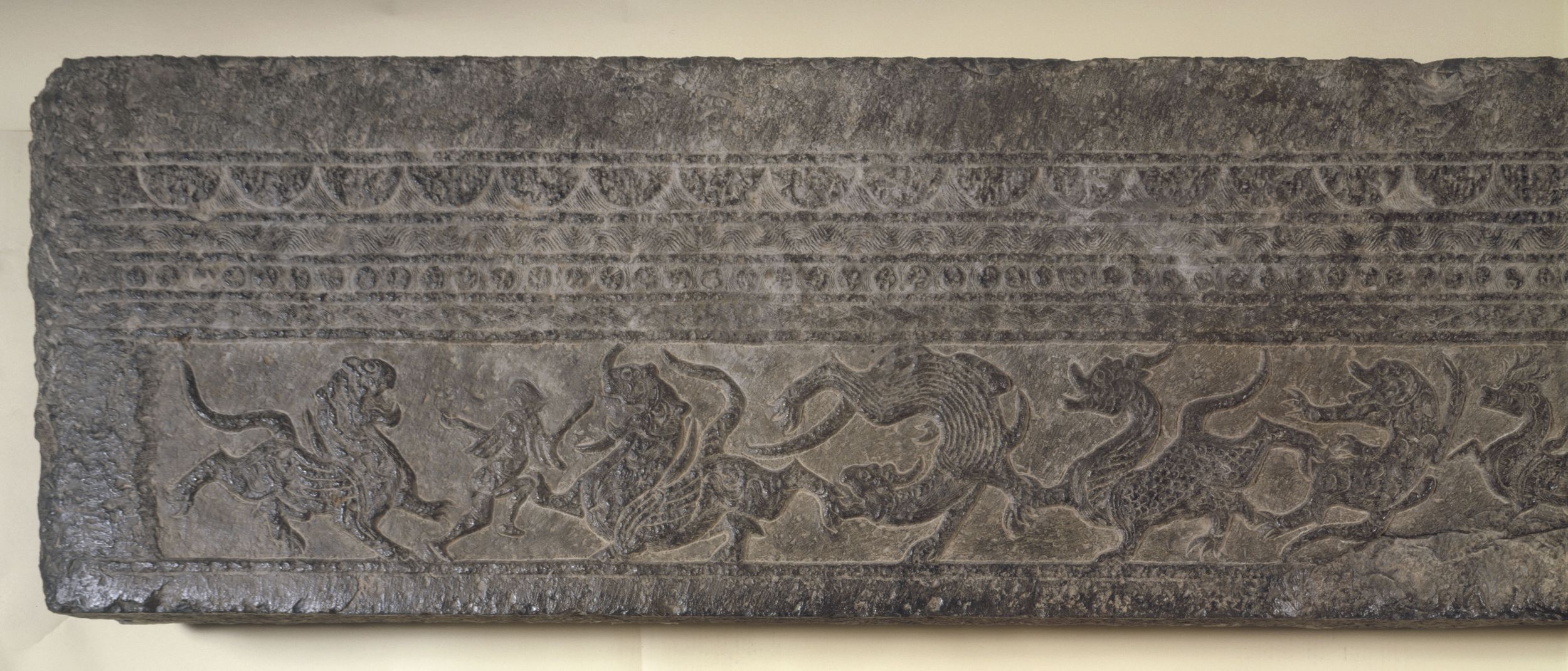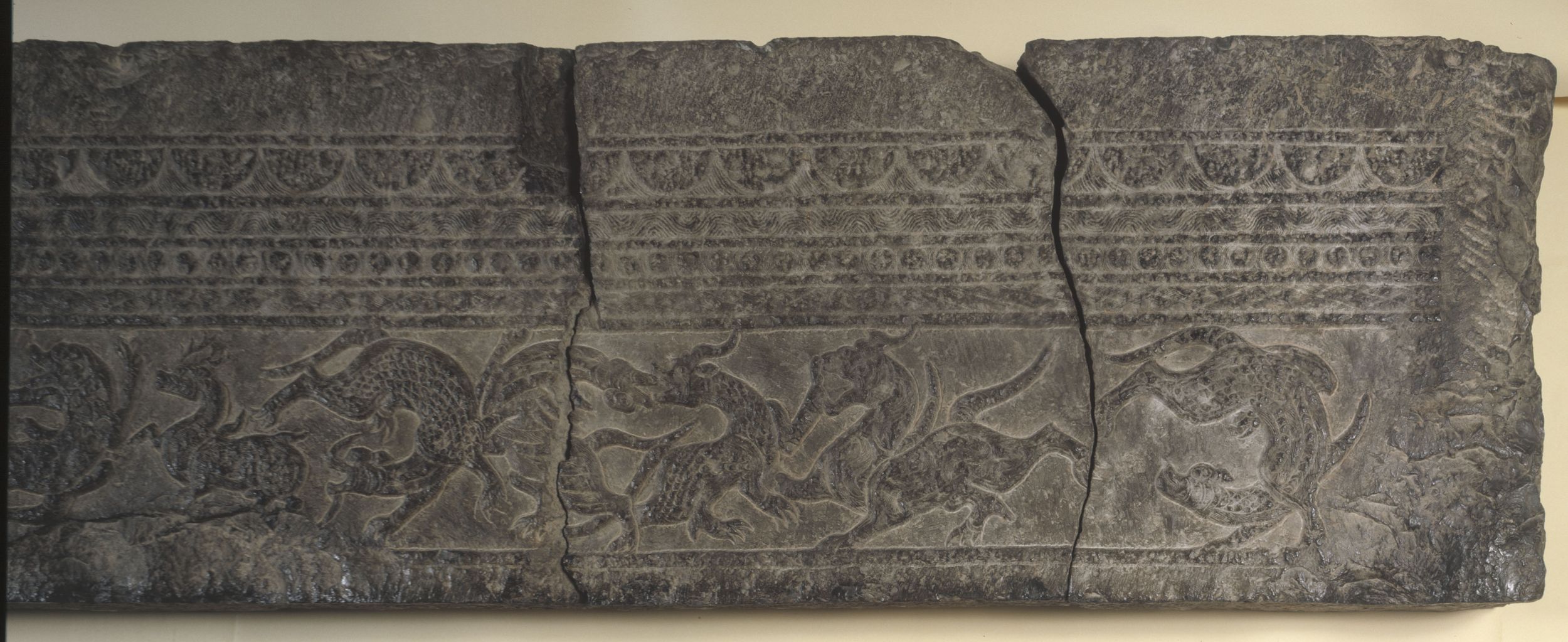
Linteau
Pierre
Elément d'architecture, Relief
Donation (acte notarié) : Société des Amis du musée Cernuschi
M.C. 6862
This impressive bas-relief was the first object donated by the Societé des Amis du Musée Cernuschi, founded in 1922. Given its size and shape, it was probably a lintel over two twin doors, separating the inside of a tomb into two chambers.
Its decoration pertains to Taoist-inspired theories of the late Han period.
The frieze pictures a “bird-man” (yuren) Immortal figure, perhaps an exorcist (fangxiangshi) in disguise, who performed rituals to secure a soul’s safe passage to the afterlife, and various fabulous winged creatures. This fantastical bestiary includes several felines and dragons, a bear and a deer, animals that acted as psychopomps.
This composition has similarities with the painted frieze in the tomb of Bu Qianqiu in Luoyang dating from the late Western Han period (226 BC-AD 9), which describes the ascent of the soul (hun) of the deceased to the heavens.
The Cernuschi Museum lintel, executed in a style that dates it to the last decades of the Han dynasty, has a liveliness and sense of movement about it that is also found in the reliefs of the Han tombs in Nanyang (Henan), a major economic centre in the Eastern Han period (25-220). In its execution, dancing line of animals and frieze of motifs in the upper band, the Paris lintel is also comparable to pieces found in Yongcheng and kept in the Henan Museum, Zhengzhou. Despite the large number of decorated Han tombs in Henan and Shandong, it is impossible to establish an approximate or even hypothetical provenance for the Cernuschi Museum lintel on solely stylistic grounds.
